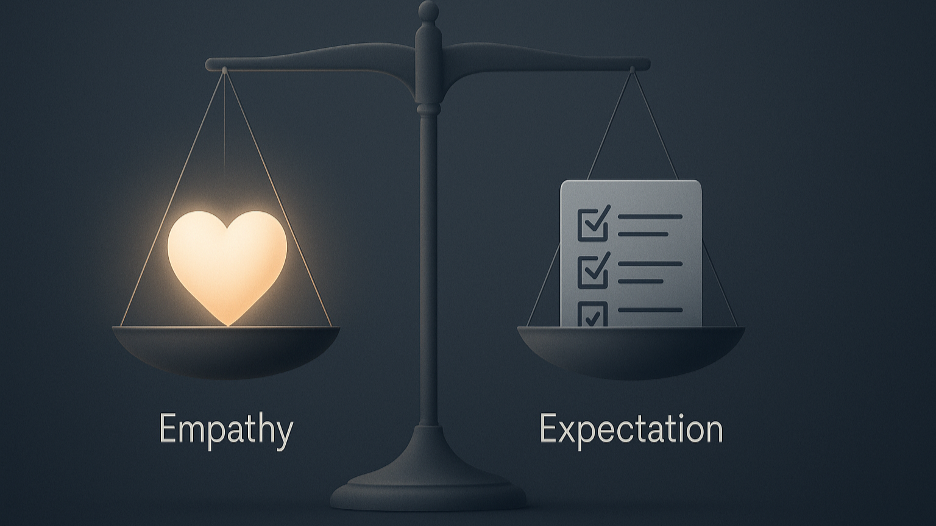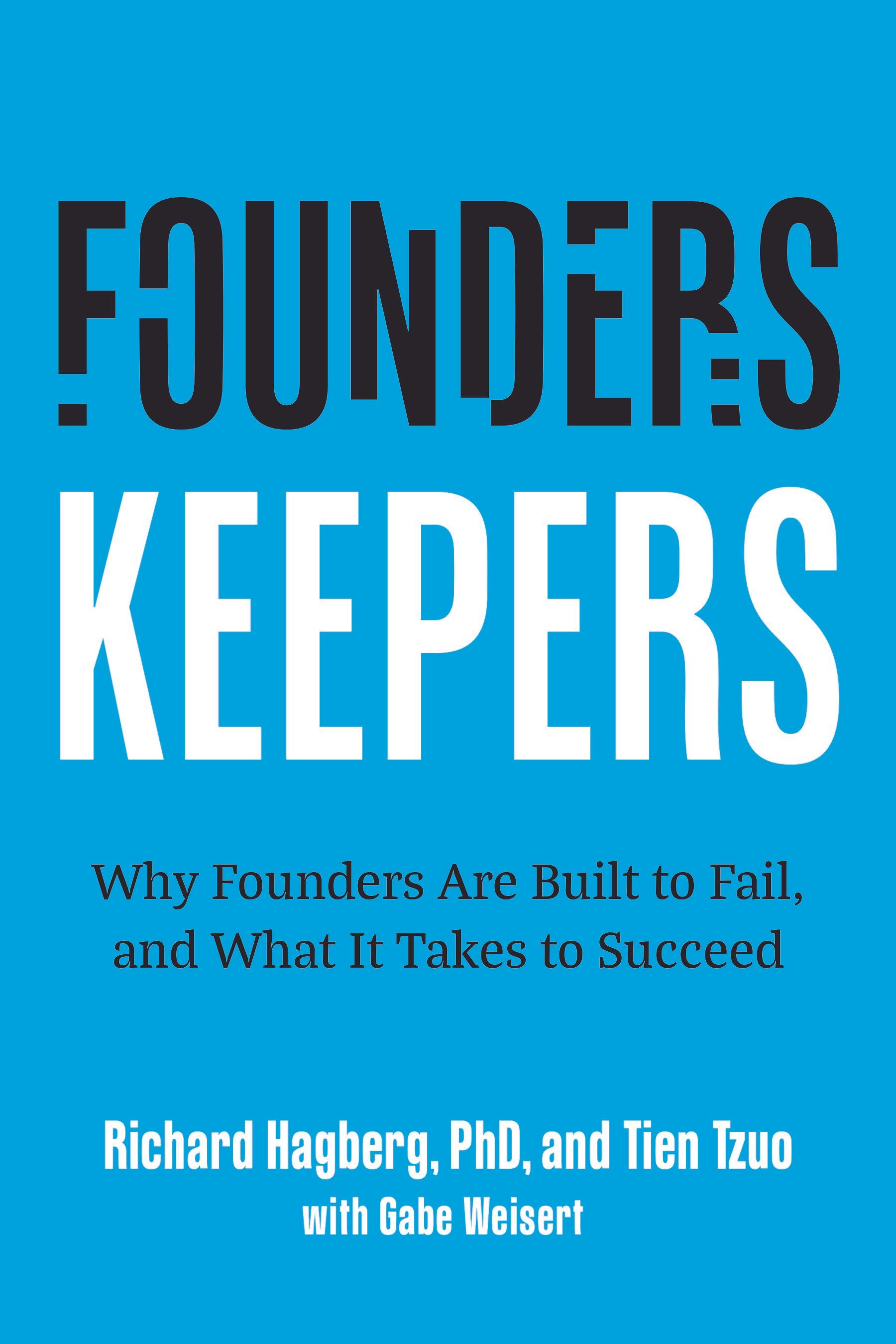Article
How to Improve Your Team’s Decision Making
A Disciplined Approach to Better Efficiency, Judgment and Results

Letting the Facts Win
The most powerful method for improving the quality of your decisions is to follow a disciplined decision-making process. Decisions are often contaminated by biases, a tendency to jump to conclusions, emotional reactivity and by pressure to act quickly. In this blog we will review both the benefits of following a disciplined decision process as well as how to implement this this process to improve the quality of the outcomes. When making decisions with a team, the conscious or unconscious influence of the leader can sabotage the entire discussion. The principles and practical suggestions in this article will be useful for both individual and group/team decision making, and for both professional and personal decisions that you need to make. The goal is to make objective decisions and let the facts win. Accomplishing this is a challenge for every leader.
The surprising key to effective decision making
Just as with individuals, there are principles and dynamics that can promote wise and effective team decisions. You might be surprised to learn that an even more crucial factor than gathering reliable data is having in place a disciplined process for involving the whole team in the making of important decisions.
Amazing and Relevant Research
Research by behavioral economists Dan Lovallo and Olivier Sibony looked at 1,048 business decisions over five years tracked both the way the decisions were made, and the outcomes in terms of revenue, profits, and market share. Their focus was to understand the impact of bias on corporate strategy and the decisions that guided it. Most of the teams they studied had conducted rigorous analyses before making the decision, compiling financial models and assessing how investors might react to their plan. These were not decisions about what color chairs to buy for the conference room, but major decisions such as whether to launch a new product or service, change the structure of the company, enter a new country, or acquire another firm. They also looked at the results, the outcomes of these decision on revenue, profit, market share and return on investment.
Lovallo and Sibony also asked the teams to describe their decision-making process: how they went about making the decision. For example:
- Did the decision-makers consider multiple points of view
- Did they recognize what they didn’t know and what was uncertain
- Did they include participation from a range of people with differing views on the desired outcome and how to get there?
- Did they search for evidence that contradicted their beliefs?
- Did they include in their discussion points of view that contradicted the senior executive’s perspective?
- Did they elicit participation from a range of people who had different views?
What they found was that the decision-making process that the teams utilized was far more important than analysis and having the right data – astonishingly, by a factor of six! Having the right data clearly matters, but it’s not enough. In other words, good analysis in the hands of smart people won’t always lead to good decisions. Even though detailed analysis is important, the decision-making process itself was six times more crucial to successful outcomes. When the decision-making process was improved there was a statistically significant improvement in financial results.
Why should this be? They concluded, "An unbiased decision-making process will do a lot is ferret out poor analysis. The reverse is not true; superb analysis is useless unless the decision process gives it a fair hearing…”. So, how can the leader ensure that a fair hearing is given to all the facts, relevant factors, and alternatives? How can we attain that level of objectivity and fairness required to minimize biases, challenge assumptions, and as much as possible neutralize all the other ways we tend to blind ourselves, distort our perspective and sabotage?
One way to overcome bias and a tendency to jump to conclusions, is to explore multiple options to avoid focusing on conclusions that are too narrow, biased or reactive. A single individual may have trouble doing this effectively. Utilizing outside input from experts or using your team in a brainstorming session can usually generate numerous possible approaches. This can also help you avoid recency bias. Recency bias occurs when a leader or team puts too much emphasis on recent events and give less weight to those that have happened in the past. It skews perception toward short-term thinking.
Another way to sidestep bias is to invite team members to challenge each other’s assumptions and ask disconfirming questions, such as:
- What could go wrong if we do this?
- What is the biggest potential obstacle you can see in the solution we have proposed?
- If you follow my proposed approach, what might happen that we haven’t thought about?
- What haven’t we considered, what are we missing by taking this approach?
- If we follow this plan, what problems might arise?
How many leaders – especially if they have an idea of where they want to go on a specific initiative – are willing to ask themselves such questions and subject themselves to input that might cast doubt on their decisions? Yet questions like these, if taken up by the group, can yield insights that might avoid hidden danger and difficulty. Leaders often deceive themselves by thinking that they are gathering information when they are actually fishing for support their idea and trying to be right rather than trying to uncover the facts.
If you want to get to the best answer rather than seeking confirmation of your viewpoint, invite the perspectives of people who have diverse backgrounds and experience in different domains and different companies. Don’t be afraid to spark constructive disagreement. In fact, encourage it. Ultimately you will create a more effective decision-making environment if you use your team, and this is particularly important around strategic decisions.
The value of active participation in a disciplined group process
Not all decisions require involvement of your team. Some decisions you may need to make by yourself. Some require you to consult with others who have a useful perspective and unique insight into the problem you are trying to solve. Some are best delegated to others who have demonstrated good judgment and capability. However, when you have the time, need alignment, buy-in and support for your decision, need to generate multiple creative alternatives, and functional or domain knowledge, involving your team may produce a better decision. Of course, this requires good team communication, effective collaboration and means you must actively facilitate a disciplined process. But the synergy of effective team problem-solving and lively discussion can bring exciting results and higher levels of acceptance of the ultimate decision. If you are going to lead the problem-solving or team decision process, here is a brief description of an effective decision process:
Step by Step To Better Decisions
- Clearly identify what the problem is that you’re trying to solve and what you are trying to accomplish
- Define what success looks like and your criteria for evaluating the optimal outcome
- Collect the facts that are relevant to the problem or decision
- Actively encourage the participation of all team members
- Separate the facts from opinions and speculation about the facts
- Generate multiple alternatives for solving the problem
- Evaluate alternatives against your success criteria
- Consider the pros and cons, obstacles and potential consequences of the best alternatives
- Select the best option or multiple options
- Develop a plan of action and how it will be implemented (who does what, when etc.)
- Communicate your decision to those who will be affected
This process doesn’t just happen. The leader needs to be sure a systematic, disciplined process is followed. The leader can help the facts win, or he/she can bias it, skewing the outcome. If you follow a well-defined, systematic and disciplined process, and the team gets used to following that process, the quality of decisions that are made by the team will be much higher. You may not always feel that you have the time to do this, but if the decision has important consequences, or is complex or has triggered strong conflicting points of view, it might be the best approach.
Hagberg Consulting Group/Accenture Research on Cultures that Get Financial Results
The many benefits of including your team in decision-making were borne out by data collected by both Hagberg Consulting Group and Accenture. In a study that looked at the corporate culture of over 300 companies, we found that financial results and retention of top performers were strongly influenced by team participation. Here are some of the key findings:
- The higher the level of team member participation in decision making, the more ideas were generated, and innovation and risk taking increased
- A higher level of participation by team members leads to greater alignment and a sense of ownership on strategic decisions
- A higher level of participation by team members means that they have an opportunity to openly share their views, reducing the chances of political maneuvering behind the scenes
- The higher the level of participation by team members, the greater the spirit of collaboration, communication, and coordination that is created on the team
- The higher the level of participation by team members, the more adaptable the organization
- The higher the level collaboration between team members, departments, and groups, the better the financial results
- The more team members were willing or able to challenge outdated assumptions and ineffective practices, the better the results
- The higher the level of cooperation and team spirit, the easier it was to retain top talent
- The more the organization’s leaders demonstrated trust in team members, the more likely the organization was to retain top talent
- The more conflicts were addressed directly and not swept under the rug, the more likely it was to retain top talent
When team members have active input in decision making, they take pride in the decision, and feel more engaged with the company. When they are directly involved in the creation of strategy, for example, they have a deeper understanding of what the strategy is, and are more aligned, inspired, and motivated to work toward achieving whatever the plan is. Employee loyalty increases. When the players are more aligned, the team and the organization as a whole becomes more agile, able to adapt more quickly and move more coherently. Not surprisingly, financial results improve.
Team participation in making important and critical decisions stimulates useful dialogue. The input from team members with different domain knowledge can lead to exploration of creative alternatives. This will take more time than a decision handed down from above but will likely yield higher quality solutions and produce greater buy-in and support for the ultimate decision.
This collaborative problem solving/decision making process requires the leader to facilitate effective communication and skillfully guide the team to systematically work through the problem. But the leader must also be willing to share power and give up some degree of control.
The dynamics of group decision making
- Brainstorming: The decision-making process moves naturally through predicable phases. It begins with some version of brainstorming, in which ideas are generated and put on the table (or the whiteboard, or a digital equivalent) for consideration. In this stage, the goal is to come up with as many ideas as possible, not to censor some ideas as “unworkable” but rather, to encourage the ideas to flow. It is a process of divergent thinking, aiming at an expansion of possible options.
- Getting closure: Brainstorming alternative solutions inevitably leads to the need to bring all the ideas to closure. Your task as leader is to help the team hold an in-depth discussion of the alternatives, and to provide some structure for selecting the best of them. The purpose of the discussion, of course, is to reach some sort of consensus, to narrow down the options in order to go forward toward a solution and then a plan of action.
- Exploring differences : In the conversation, those who favor an approach or a solution have a chance to advocate for it. The job of the others is to listen respectfully and consider the idea with as little bias or prejudgment as possible. Typically, many ideas are put forward, without a clear solution emerging.
- Getting bogged down : At this point, the team may struggle to comprehend the wide range of ideas that have been generated and reach consensus or at least a workable conclusion. This can be difficult and often leads to arguments and stalemate. The team may become bogged down in competing viewpoints. No way forward seems clear and obvious. Frustration mounts. There may be irritation or anger.
Why does the team get stuck?
- Group members have different agendas, needs, biases and frames of reference.
- Often the discussion reveals that people don’t really understand one another.
- Some members push their own agenda aggressively.
- Some interrupt while others go on and on repeating their point of view.
- Some dismiss the ideas of other members.
- Some members attack, while others get defensive and withdraw.
- Some lose patience with the whole process, which can lead to frustration, and dysfunctional conflict or the adoption of suboptimal solutions that are a compromise, false consensus, or groupthink.
- If the trust level of the team is low and there are conflicts and tensions between team members, it is common for members to misinterpret or misrepresent each other’s ideas.
Overcome the conflicts or stalemate :
In order to break through the logjam, the team leader may need to switch styles and help the team engage in convergent thinking, in order to move together toward a decision. Convergent thinking is applying logic to evaluate options and narrow down to the best answer or alternatives. The leader needs to help the group develop a common understanding, generate alternative solutions, sustain motivation to work through the issues. and then integrating divergent into a mutually acceptable solution. The process of working toward a solution can be greatly aided by a leader or outside facilitator who is skilled in facilitating group discussions. This is an art that requires both learning and practice. As the leader, you may choose to find and hire such a person as a consultant when difficult or crucial strategic decisions need to be made. Or you may take it upon yourself to play that role. If you do, keep in mind the following basic guidelines:
- Don’t panic: Recognize that you or your team is stuck, and that it is a necessary stage in the transition from divergence (throwing out a multitude of ideas) to convergence (choosing the most viable solutions and formulating a plan).
- Encourage full participation: Get everyone involved in the dialogue. Foster an atmosphere of safety and respect. Draw people out. Ask team members to speak in order to be understood rather than to win an argument.
- Promote mutual understanding: This begins with listening. Encourage people to try to walk in each other’s shoes, to really understand what others are saying rather than looking for weaknesses or holes in their argument. Ask people to define their terms and explain their thinking and their conclusions.
- Work toward an inclusive solution: Avoid “my way or the highway” thinking and look for ways to incorporate everyone’s interests in a workable plan.
With those basic principles in mind, consider doing some of the following:
- Confirmation and Sunflower Bias: Be aware that these biases are real problems in creating an atmosphere of open discussion of alternatives and reaching conclusions about what to do. As the team leader, be careful not to unduly influence the group or manipulate them into supporting your biases. Relinquish the desire to control the solutions and instead, allow all ideas to get a fair hearing, so that the facts can win. It’s often wise to speak last.
- Psychological Safety: Throughout the discussion, remember the importance of creating an environment of psychological safety for open dialogue to really be effective. People need to feel comfortable and safe enough to freely express their views. Be alert to the fact that not all team members may be putting their cards on the table. Despite your effort to encourage psychological safety, not everyone feels safe in expressing what they really think, want or fear. They may feel it is too risky, so they hold back. Try to draw out team members’ concerns in open discussion but also consider having each member anonymously write down anything they haven’t said on a slip of paper.
- Encouraging Participation: Try to listen to all points of view by drawing out team members, summarizing or paraphrasing their points. Each team member has a unique set of interests and concerns and needs to have the time and to feel safe to express them. Watch out for team members withdrawing or shutting down
- Digging Deeper: Do your best to help team members develop a deeper understanding of each other’s perspectives. Encourage them to ask questions to clarify their understanding when other members’ ideas are confusing or complex. Remind team members that their goal in this phase is to understand one another, not to win arguments or points.
- Actively facilitate communication: This means you may need to play communication traffic cop or referee to make sure members are listening and really understanding other’s points of view. Sometimes this means providing some structure for the discussion such as setting a time limit for each team member to express their point of view, and/or encouraging other team members to ask the speaker to clarify what they mean or to give further explanation of key points. Then, ask any members who have asked questions if they now understand the speaker’s point. Look for patterns or ways to categorize the options or ideas that are generated that can help bring coherence to the discussion
- Clarify differences: When there is a misunderstanding – and there will be – try to clarify differences and see if there is a common ground. At this point your goal is to promote accurate understanding, not to resolve conflicts between members.
- Surface different assumptions, motivations and definitions: Be alert to team members having different assumptions about the problem, the meaning of various terms, the risks, the importance of different issues, and so on. Members may assume, rightly or wrongly, that other members have hidden or unexpressed motives for proposing a solution. Part of your job is to help members explain the real meaning of statements they make to one another so unspoken assumptions are really understood.
- Call out disruptive or non-collaborative behavior: When team members interrupt or are overly aggressive, dismissive or confrontational, the leader must firmly call out these behaviors.
- Separate facts from opinions: It is important in discussing the details of a problem or solution to separate the facts from people’s opinions, interpretations or speculations about the meaning of the facts. Before trying to explore the viability of different solutions, it is wise to list facts and opinions separately to help the team distinguish one from the other.
- Don’t allow false consensus: Once the team has begun to narrow down their options, ask each member to express their concerns about each proposal. In an effort to try and get the decision made, it is easy for the leader to assume agreement with a solution. This may result in hidden concerns masquerading for consensus. False consensus often sabotages real alignment and creates fertile ground for later problems in implementation. Resistance often has its roots in fears about how the implementation of a proposal may impact the individual team members or their teams. This is related to group think.
- Apparent tangents or wild ideas can be gold mines: Be alert to the fact that some members’ ideas or proposals may initially feel like they were off topic or represent a distracting tangent, when they actually might represent a subtle or new issue that others have not seen. If you explore these topics the team might develop a deeper, more nuanced understanding or better solution.
- Revisit original goal or decision criteria: Once you have narrowed down possible alternatives to a reasonable number, consider going back to your original problem definition and goal, and evaluating each alternative against your decision criteria. Ask the team to consider what are the most important elements of an ideal solution. It might be cost, ease or speed of implementation, fit with your strategic objectives, consistency with your core values or any other thing the team considers crucial for the proposal to be successful.
share this
Related Articles
Related Articles





